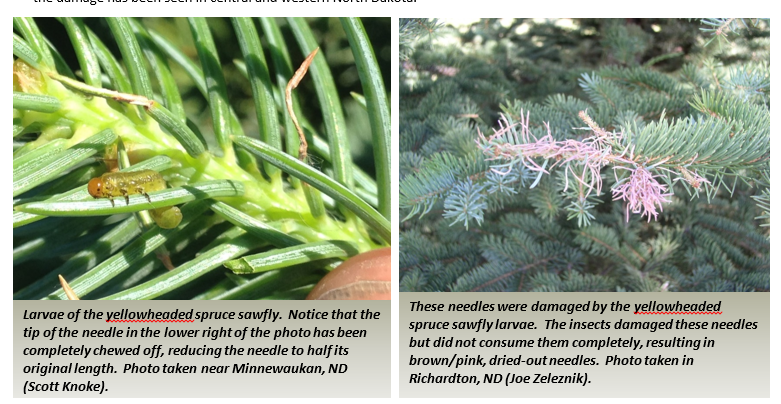Yellowheaded Spruce Sawfly
This page was adapted from the article, "Scout for Spruce Sawfly," which appeared in Crop & Pest Report on June 10, 2021.
Yellowheaded spruce sawfly larvae have been observed at about 830 Growing Degree Days (base temp 40F). Once that temperature threshold is met, the larvae feed on first- and second-year needles of all spruce species and can be very destructive. Sometimes whole needles are eaten; in other cases, the needles are damaged to the point where the ends dry out and turn a pink/brown color.

Larvae feed for 30-40 days and are most susceptible to insecticides for the first two weeks of their development. Carbaryl and acephate are both labeled for sawfly control. For a small infestation, simply picking the larvae off the tree by hand and destroying them may be easier, and is equally effective. A strong jet of water may also help reduced sawfly populations on trees.
When using insecticides, be sure to read, understand and follow all label directions.
Joe Zeleznik
NDSU Extension Forestry Specialist
